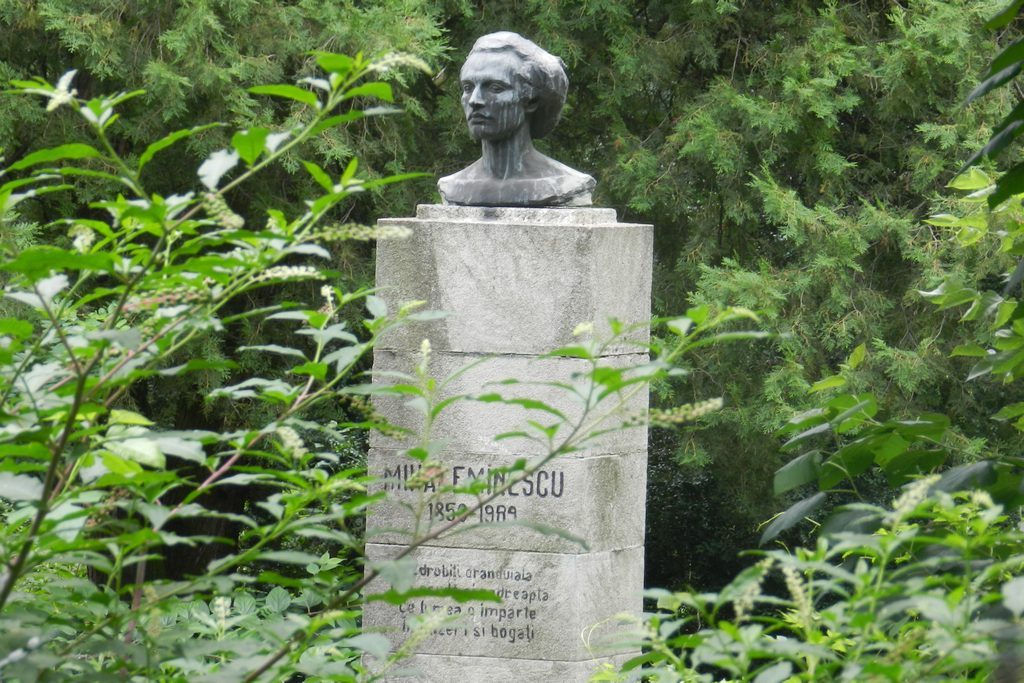

The bust of Mihai Eminescu from Drobeta Turnu Severin was executed by the sculptor Gheorghe Anghel.
Mihai Eminescu (born Mihail Eminovici; born on the 15th of January 1850, Botoșani – deaceased on the 15th of June 1889, Bucharest), was a Romanian poet, prose man and journalist, considered by the Romanian readers and posthumous literary critics as the most important poetic voices from the Romanian literature.
Receptive to the European novels from the XVIIIth and XIXth century, it assimilated the Occidental poetic visions, his creation belonging to a literary romance relatively late. In the moment in which Mihai Eminescu recovered the traditional themes of the European Romance, his taste fro the past and his passion for the national history, to whom he wanted to built a Pantheon of voivodes, the regressive nostalgia for childhood, the melancholy and the cultivation of the depressive states, coming back to the nature etc, the European poetry discovered the paradigm of the modernism, through Charles Baudelaire or Stephane Mallarme, for instance.
The poet had a good philosophical education, his poetic work being influenced by the great philosophical systems of his era, of ancient philosophy, from Heraclit to Platon, by the great systems of thinking of the romance, by the theories of Arthur Schopenhauer, Immanuel Kant (as a matter of fact, Eminescu worked Eminescu worked for a period of time at the translation of his treaty, the Critic of pure rationality, at the impulsion of Titu Maiorescu, the one who asked him to take his doctorate in the philosophy of Kant at the University from Berlin, a plan which hasn’t been finalized eventually) and by the theories of Hegel.
The principal ideology roots of his economical or political thought were conservatives; by his articles published especially in the period in which he worked at Timpul he managed to annoy some of the important leaders from this great party launched the slogan, famous in the period “You should stop this Eminescu fella!”. The Eminescu journalism offered to the readers a radiography of the political, parliament or government life from that period; moreover, the journalist was at need also a literary or theater chronic, he wrote about the society life or about the events of less of importance, being a real chronicler of the moment.
Eminescu was active in the political – literary society Junimea, and he worked as editor at Timpul, the official newspaper of the Conservatory Party. He published his first poem at the age of 16, and at 19 years of age he left to study at Vienne. The manuscripts of the poet Mihai Eminescu, 46 volumes, approximately 14.000 pages, were offered to the Romanian Academy by Titu Maiorescu, in the meeting of the 25th of January 1902.
Eminescu was hospitalized on the 3rd of February 1889 at the hospital Mărcuța from Bucharest and later on he was transported to the sanatorium Caritas. On the date of the 15th of June 1889, around the hour 4 in the morning, the poet dies in the sanatorium of doctor Șuțu. On the 17th of June Eminescu was buried at the shadow of a linden tree from the cemetery Bellu from Bucharest. He was chosen post – mortem (on the 28th of October 1948) as a member of the Romanian Academy.
